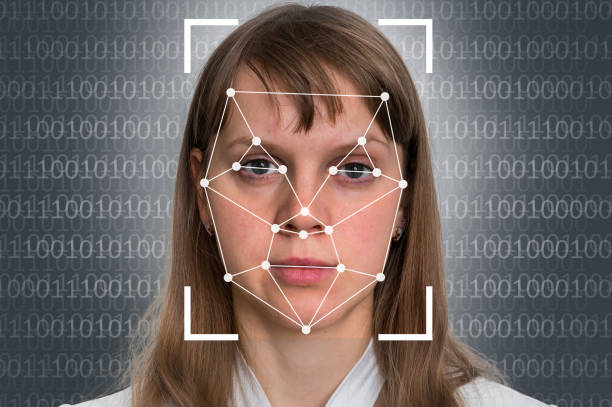In the rapidly advancing digital age, where security and convenience converge, Face ID checks have emerged as a beacon of innovation. This groundbreaking technology, driven by facial recognition algorithms, transcends the realm of smartphone unlocking, permeating various facets of the digital ecosystem. In this exploration, we traverse the expanses of Face ID’s applications, benefits, and the intriguing possibilities it unfolds across industries.
The Widening Horizon of Face ID Applications
1. Cryptocurrency Security:
As cryptocurrencies ascend in popularity, securing digital assets becomes paramount. Face ID check in the cryptocurrency world provide a robust layer of authentication, ensuring secure access to wallets and authorizing transactions through a simple facial scan.
2. Healthcare Access Control:
In the healthcare sector, where privacy is paramount, Face ID is employed for secure access to electronic health records (EHR) and health management apps. Patients can benefit from a seamless yet secure authentication process.
3. Smart Homes and IoT Devices:
The integration of Face ID extends to smart homes, allowing users to secure access to IoT devices. From unlocking smart door locks to controlling home automation systems, facial recognition adds an extra layer of security to connected living.
The Intricacies of Facial Recognition Technology
1. Depth Sensing and 3D Mapping:
Central to Face ID is the utilization of depth-sensing technology. By employing 3D mapping techniques, facial recognition systems create a detailed and unique profile, enhancing the accuracy and reliability of user authentication.
2. Biometric Uniqueness:
The inherent uniqueness of facial features contributes to the robustness of Face ID. Unlike traditional passwords or PINs, facial recognition relies on biometric data that is challenging to duplicate, fortifying security measures.
3. Real-Time Adaptive Algorithms:
Facial recognition systems employ adaptive algorithms that evolve with the user’s appearance over time. This adaptability ensures consistent authentication, even as individuals change facial hair, hairstyle, or other variations.
The Intersection of Security and User Experience
1. Biometric Convenience:
Face check.ID epitomizes the marriage of security and user convenience. The ease with which users can unlock devices or authorize transactions with a mere glance enhances the overall digital experience, fostering user trust and satisfaction.
2. Efficiency in Digital Transactions:
In the realm of digital transactions, Face ID streamlines the authentication process. Whether making secure mobile payments or authorizing financial transactions, users can complete these actions seamlessly, reducing friction and enhancing efficiency.
3. Multifactor Authentication Synergy:
Combining Face ID with other authentication factors, such as fingerprint recognition or voice recognition, creates a multifactor authentication synergy. This layered approach further fortifies security protocols.
Addressing Privacy Concerns and Ethical Considerations
1. Privacy-Preserving Designs:
Developers are actively working on privacy-preserving designs for facial recognition systems. Techniques such as federated learning aim to train models without compromising user privacy by keeping sensitive data decentralized.
2. Transparency and User Consent:
The importance of transparent data handling practices and obtaining user consent cannot be overstated. Ethical implementations of Face ID checks prioritize user awareness and control over their biometric data.
3. Bias Mitigation Strategies:
The industry is actively engaged in addressing biases inherent in facial recognition technology. Ongoing efforts include the development of more diverse datasets for training models and implementing algorithms that reduce demographic biases.
Future Frontiers and Emerging Trends
1. Augmented Reality Integration:
The fusion of Face ID with augmented reality experiences is on the horizon. This integration could redefine how users interact with AR applications, unlocking new possibilities in gaming, education, and more.
2. Evolving Regulatory Frameworks:
As the use of facial recognition expands, regulatory frameworks are likely to evolve. Clear guidelines and standards will play a crucial role in ensuring responsible and ethical deployment across industries. Biometric spoofing is also an aspect that needs to be focused.
3. AI-Driven Advancements:
Artificial intelligence (AI) will continue to drive advancements in facial recognition technology. Machine learning algorithms will refine facial recognition capabilities, enhancing accuracy and adaptability.
Conclusion
Face ID checks represent a pivotal shift in how we approach digital security and user authentication. Beyond the confines of smartphone unlocking, the applications are multifaceted, reaching into the realms of finance, healthcare, smart living, and more. As we navigate this landscape, a delicate balance between security, user experience, and ethical considerations is paramount. The ongoing evolution of facial recognition technology holds the promise of a future where the digital experience is not only secure but seamlessly integrated into the fabric of our daily lives, redefining the boundaries of what is possible in the interconnected world of technology.



































